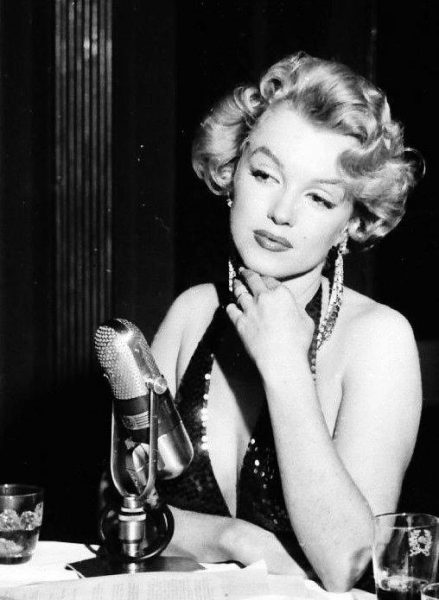
In their new podcast series, Famous Fates, Vanessa Richardson and Carter Roy profile ‘incredible people whose grandiose lives were matched only by their shocking deaths.’ You can stream an episode dedicated to Marilyn now on Spotify.
Marilyn Monroe 1926-1962

In their new podcast series, Famous Fates, Vanessa Richardson and Carter Roy profile ‘incredible people whose grandiose lives were matched only by their shocking deaths.’ You can stream an episode dedicated to Marilyn now on Spotify.
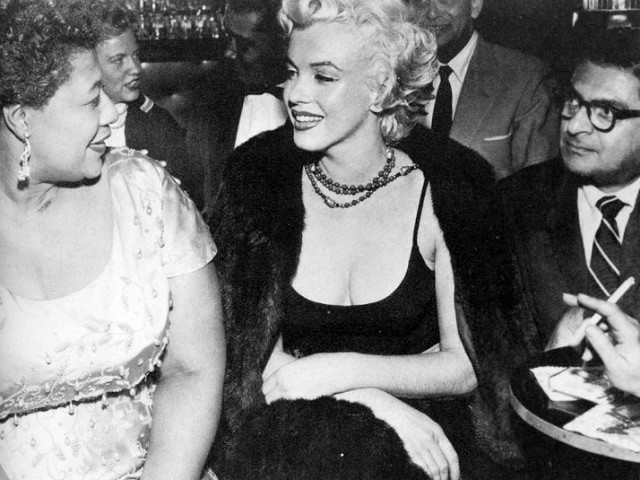
Marilyn’s friendship with Ella Fitzgerald is featured tomorrow on the France 2 channel’s 8:30 p.m. Saturday, a magazine show presented by Laurent Delahousse. The story of Marilyn helping Ella to secure a nightclub engagement in Hollywood (as recalled by the great jazz singer after Marilyn’s death) has already been depicted in a stage play, a children’s book and even an episode of Drunk History. But although the respect and affection between them was genuine, a recent article by Dan Evon for Snopes suggests the facts are more complicated than they appear.
“This is a genuine photograph of Monroe and Fitzgerald. It’s also true that Monroe urged Mocambo’s owner Charlie Morrison to book Fitzgerald in 1955 … In sum, Fitzgerald was the not the first black singer to perform at the Mocambo. However, her performance at the West Hollywood hot spot would prove to be a breaking point in numerous ways.”
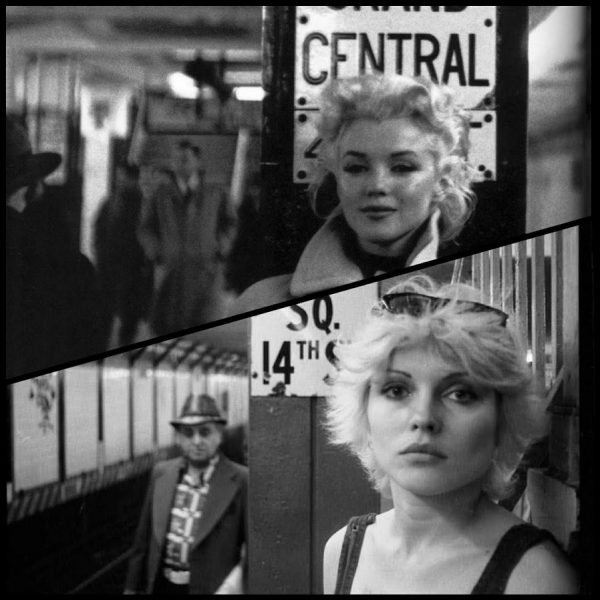
In my previous post (see here), I revealed how Blondie singer Debbie Harry was influenced by Marilyn, as described in her new memoir, Face It. Now I’m looking at some other parallels in their careers. In 1975, Debbie posed on the New York subway for her bandmate and boyfriend Chris Stein, echoing Marilyn’s photo shoot with Ed Feingersh twenty years earlier (shown above.)

In 1977, Marilyn’s photographer friend Sam Shaw filmed Blondie playing live at the Whisky A Go Go in Los Angeles for a short documentary about the band, released a year later (more info here.) “It was an odd sort of thing, about Blondie but also about my fantasy of being Marilyn Monroe’s daughter,” Debbie recalls. This was also mentioned in a New York Times profile in 1979. (At the time, Debbie said Marilyn was adopted. This was technically incorrect, but she did spend most of her childhood in the care of family and friends.)
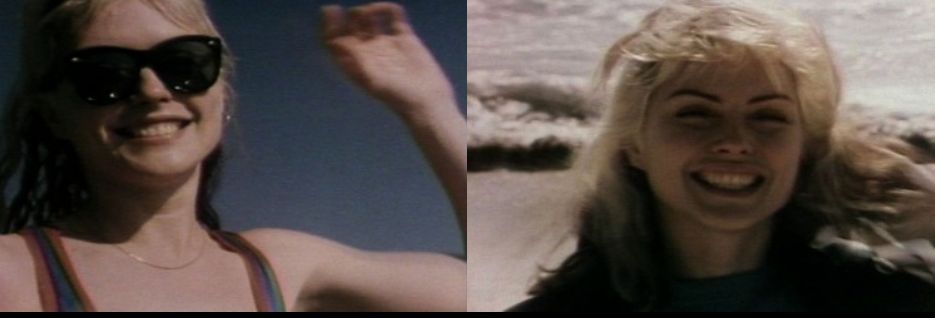
“In the summer of 1978, she was asked by the photographer and film maker Sam Shaw to provide biographical information for a one‐hour documentary film on Blondie. Interviewed by the screenwriter/novelist Ted Allan, Debbie mentioned liking a play, Fame, loosely based on the life of Marilyn Monroe. The conversation continued:
ALLAN: Do you have an affinity for Marilyn Monroe?
HARRY: Tremendous. I always thought she was my mother.
ALLAN: Did you ever seriously think that you’d go and meet her and say, ‘You might be my mother.’
HARRY: No! God! Well, you know, there’s that kind of admiration, I guess. They say that most adopted children now, in their adult life, look for their real parents … I sort of have my wild imaginings. Like she [Monroe] had wild imaginings about Clark Gable being her father … See, my mother did keep me for three months, and I have memories, a visual memory of when I was 3 months old when I was adopted.
Such fantasies percolated through Debbie’s adolescence. She says that she felt ‘different,’ worried about being crazy. As late as last year, Debbie reminded a reporter that ‘Marilyn was also an adopted child.'”
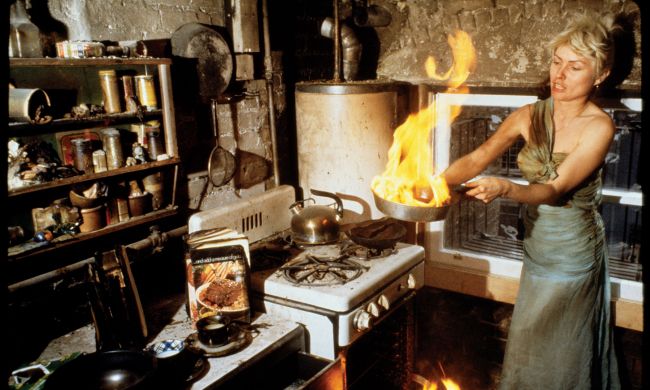
There is also a curious story about this photo, taken by Chris Stein at his and Debbie’s New York home in the 1970s. Debbie explains that Maria Duval, their downstairs neighbour and an aspiring actress, had bought this gown at auction and gave it to Debbie, believing it had been worn by Marilyn in The Seven Year Itch. I don’t recognise it as a costume from that movie, but nonetheless, perhaps it was connected to Marilyn in some way. While Debbie and Chris were on tour, there was a fire in their apartment, which leads us to this story…
“When we finally did get back, it was hugely upsetting. The place was strewn with debris from the fire. And because people were able to walk into our apartment and take things, they did … Fortunately, Chris had his guitar and camera with him. So he set up a photo session in the burned-out kitchen. The walls were caked in soot and the range was covered in ash. I put on Marilyn’s dress, which had been badly singed in the fire, and our latest close call (which wasn’t really close at all) became a work of art.”
UPDATE: Fraser Penney has suggested the dress could have been worn by Marilyn during her 1956 photo shoot with Cecil Beaton. The mystery deepens!
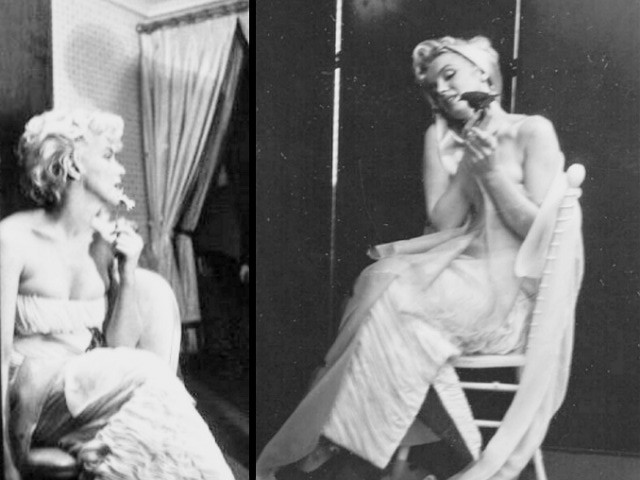

Founded in 1969, Andy Warhol’s Interview was the magazine to be seen in for nearly forty years. Although it ceased publication last year, Interview still has an online presence and earlier this week, a snippet from the past was discovered.
“As a notable admirer of Marilyn Monroe’s, Andy Warhol was sure to get some of the juiciest gossip in his celebrity circle. While he was still Editor-in-Chief of Interview, alongside Paul Morissey and Fred Hughes, he buried a drama bomb of information in the ‘Small Talk’ section of the June 1973 issue involving Marlene Dietrich and M.M herself. However, not one of the contributing editors took credit for the gossip; they instead chose to keep the source anonymous … According to the ‘Small Talk’ column, Dietrich attended a screening of one of Monroe’s earlier films and talked through every one of her scenes, mumbling: ‘So this is what they want now. This is what they call sexy.'”
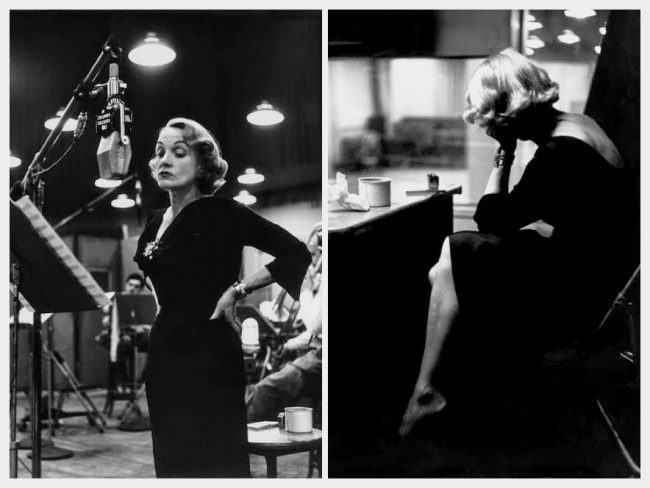
Eve Arnold, who photographed Marlene at work in a recording studio for Esquire magazine in 1952, recalled that when she later met Marilyn, the subject of Dietrich came up: “Marilyn asked – with that mixture of naïveté and self-promotion that was uniquely hers – ‘If you could do that well with Marlene, can you imagine what you could do with me?'”
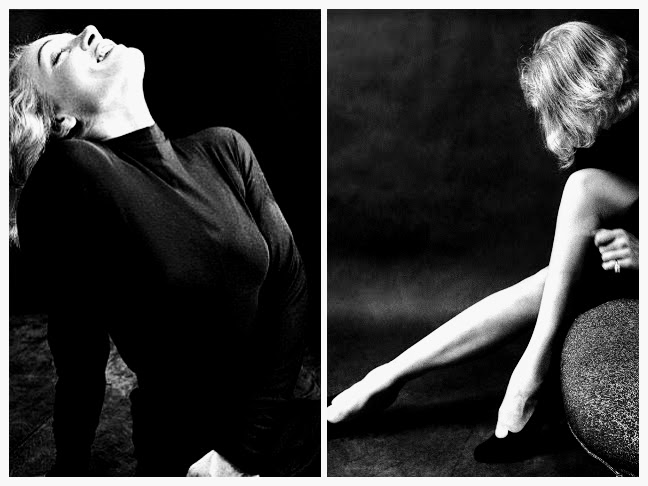
Another photographer who worked with Dietrich was Milton Greene, who later became Marilyn’s business partner. In 1955, he invited Marlene to a New York press conference to announce the formation of their new company, Marilyn Monroe Productions.

Like all stars (Marilyn included), Dietrich was naturally competitive. But although she may have briefly ‘thrown shade’ in Marilyn’s direction – to use a term that didn’t exist back then – there’s no sign of any rancour between them in these photographs.
In 1957, Marilyn was offered the lead role in a remake of The Blue Angel, which had made Marlene a global star many years before. That never came to pass, but a year later, Marilyn would recreate the character in her ‘Fabled Enchantresses’ photo session with Richard Avedon, although out of respect for Dietrich, she later asked the photographer to withdraw the images and they were not made public until long after Marilyn died.
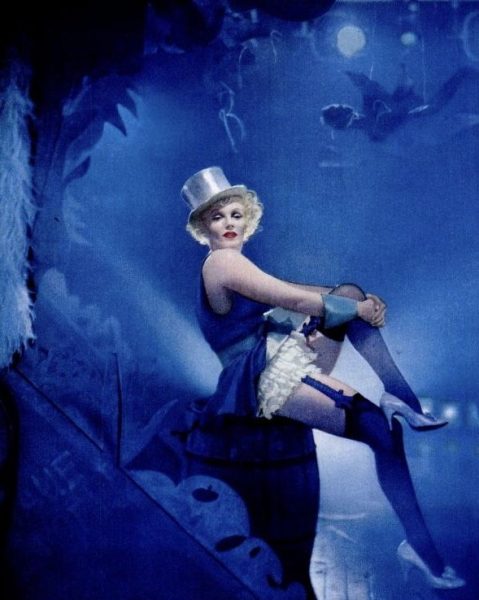
Marilyn would take a leaf out of Marlene’s playbook again in 1962, asking costumer Jean Louis to recreate the beaded ‘nude’ dress he had made for Dietrich to wear during nightclub performances. Monroe’s version became immortalised that May, when she sang ‘Happy Birthday Mr President’ to John F. Kennedy at Madison Square Garden.
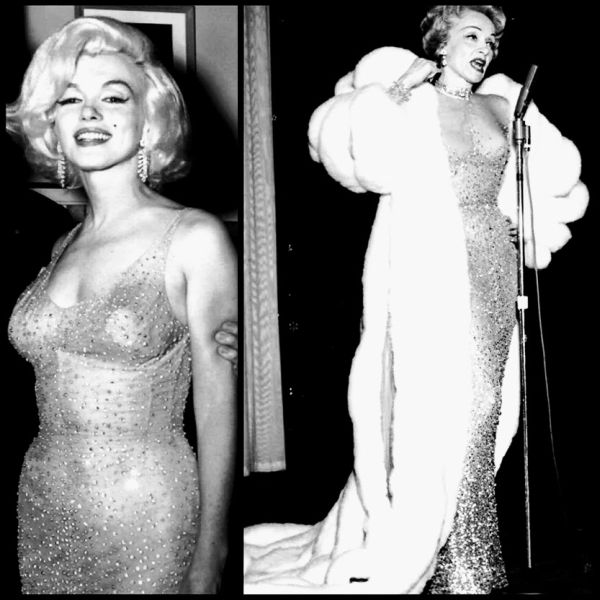
Whatever Marlene’s initial thoughts on Marilyn may have been, she would remember her admiringly, writing in her 1987 memoir: “Marilyn Monroe was an authentic sex symbol, because not only was she ‘sexy’ by nature but she also liked being one – and she showed it.”
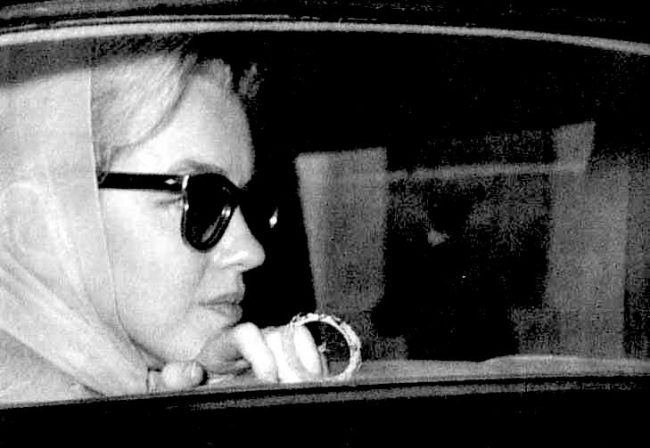
Over at The Spinoff today, there’s an extract from the New Zealand painter and poet Gregory O’Brien’s latest book, A Song in the Water. The chapter, entitled ‘A Kindness’, details his mother’s memory of attending Marilyn as a young nurse, while she recovered from foot surgery in a London hospital. It’s a touching piece, but there is no record of Marilyn having any surgery during her only visit to England in 1956, when the British press were documenting her every move. (She had injured her foot three years earlier, while filming River of No Return in Canada, but no surgery was necessary.) If Marilyn did have the operation in London, it would surely have impacted the filming of The Prince and the Showgirl. Could this be a case of mistaken identity?
“Shortly after returning from a trip to England in March 2012, I was talking with my mother over the telephone, describing an in-flight movie I had watched, My Week with Marilyn – the true story of a young film-maker who had been assigned the task of looking after Marilyn Monroe on location in England sometime during the mid-1950s. My mother took a surprising interest in hearing about the film and then told me about two nights of her life in England presumably around the same time.
Signed up with a reputable nursing agency, my mother had found herself eminently employable in post-war London … She had made the most of the twelve months she had already spent in Britain and even managed to get herself invited to a Royal Garden Party – at that time the Holy Grail of stories-to-send-the-family-back-home.
Until I mentioned the Marilyn Monroe movie, my mother had never before spoken of her employment at a central London hospital – ‘the one where all the Royal Babies were born’, by her recollection. As a contract nurse, she was always being bounced around from hospital to hospital, all over the city, with the same frequency, although for a different set of reasons, that Marilyn Monroe bounded in and out of an assortment of hospital rooms throughout her adult life.
Before being admitted to the patient’s room, my mother was taken to an adjacent office, where the nature of the night’s care was outlined. Her employment had not been arranged through the hospital – this was a separate, private contract. My mother was told that the patient was an American actress, who had earlier in the day received surgery to her feet. She was asked to sign a document or two concerning the assignment, specifically regarding the identity of the young woman in the hospital bed, who had been admitted under an assumed name.
The nature of the surgery, she was told, meant that a considerable amount of pain relief had been prescribed … With the actress as her sole charge for the night, my mother was to ensure the patient was kept warm and as comfortable as possible. If the pain became too much, a duty doctor was to be summoned. She was to remain awake, bedside, to keep an eye on things generally and also to ensure no unauthorised persons entered the room.
… Soon enough she was seated in a comfortable chair close by the bed, staring into the blonde hair of her sleeping charge and surveying, in the half-light, the well-appointed room. It was one of the best in the hospital, with large south-facing windows and good furniture.
When I asked my mother if the woman struck her as beautiful, she said that the actress was, at the time, very famous – although not quite as famous as she would be a few years later. Even my mother, not a frequent movie-goer, had recognised her instantly. She added that the actress’s appearance was perhaps a little ‘artificial’ – a word I had never heard her use before, in any context. My mother could not recall in detail any conversation that passed between them, although she could recall the woman’s sleeping head, her deep, narcotic breathing. To which she added, after further thought: ‘Oh, she was striking, yes, you could say that.’ A slight but significant revision of her earlier appraisal.
At a certain point in the night, with her charge drifting in and out of sleep, my mother herself fell into a deep slumber, from which she did not awaken until the following morning. It must have been 6am. The first thing she noticed was that one of the blankets had been removed from the bed and wrapped neatly around her. During the night, the actress had, with some considerable effort – of this my mother was certain – leaned across and, with great care, tucked her in.
About the second night, my mother had less to say … Early in the shift, my mother diligently handed over the painkillers – a formidable array, she observed, silently – and the requisite glass of water. She remained awake throughout the night, staring with girlish fascination at the face of the actress … With dawn breaking in the trees outside the brick building, a doctor knocked on the door. He told my mother that later in the day the actress was being transferred, as planned, to a private country house.”
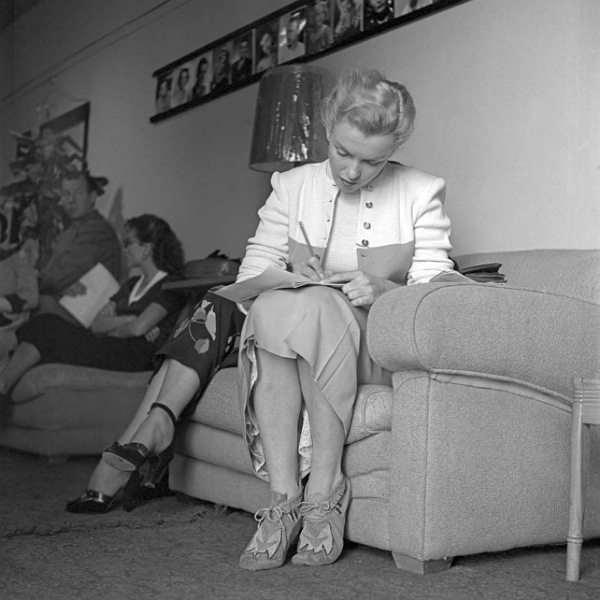
Richard C. Miller first photographed Norma Jeane Dougherty as a young model in 1946. By 1950, she was an aspiring actress and he photographed her again at an audition for Street Scene, an upcoming production at the Players Ring Theatre in Los Angeles. She didn’t get the part, and the photos remained obscure until just a few years ago.
The series was recently posted on the Considerable blog, a timely reminder that Marilyn Monroe worked long and hard for fame, with disappointments along the way. When she and Miller next met in 1958, she was at the peak of her success, filming Some Like It Hot.
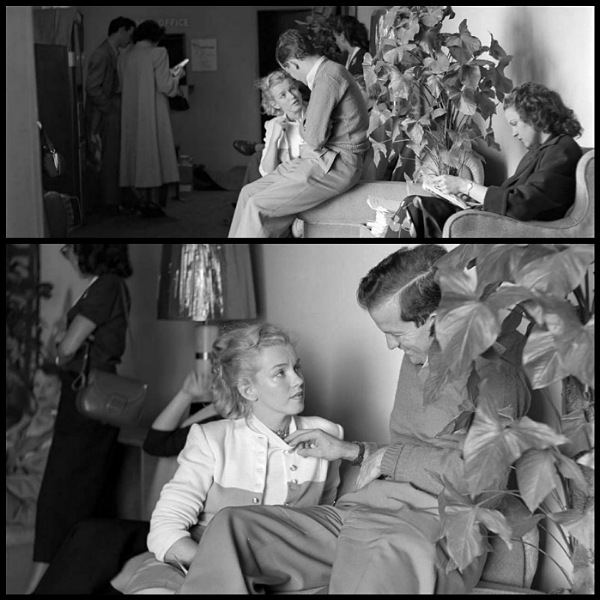
This photo of Marilyn talking with an unnamed man (most likely involved with the production) has led to speculation among fans that he may have been making unwanted advances on her, from the way he was tugging at her collar and the solemnity of her expression in contrast to his.
But while sexual harassment was certainly a widespread problem in Hollywood – and is still making headlines today – it’s all too easy to pass judgement on images without knowing their full context. They were not alone at the time, and the relaxed demeanour of others in the frame doesn’t indicate any cause for concern. (This poster from the 1931 movie adaptation of Elmer Rice’s Pulitzer-winning play, in fact, suggests Marilyn may simply have been rehearsing with another hopeful actor.)
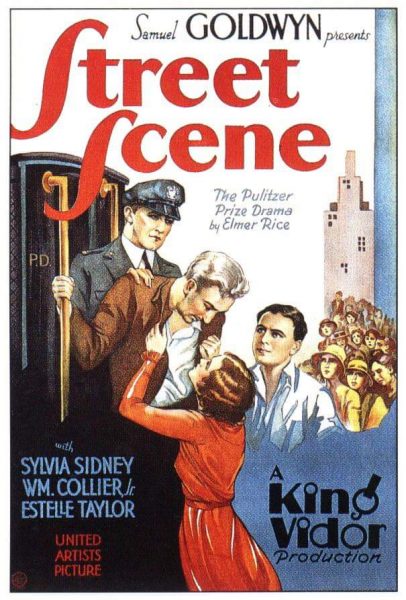
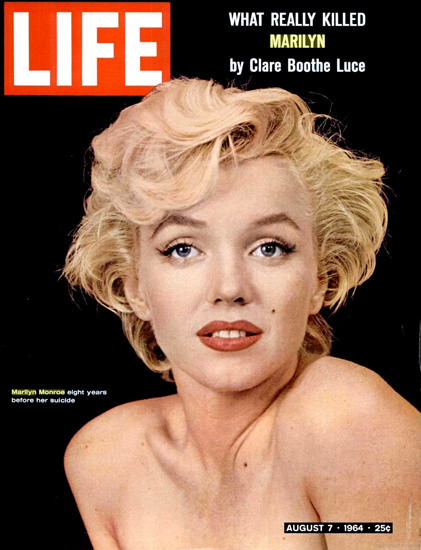
The Fox News documentary series, Scandalous: The Death of Marilyn Monroe, has now concluded. While some viewers voiced concerns about sensationalism in the early episodes, most fans watching in the US seem satisfied by the verdict.
“I’m one of the experts interviewed for this three-part special on Marilyn Monroe,” historian Elisa Jordan says. “I’m pleased to be a part of something that gets closer to the truth about her death and debunks a lot of the ridiculous conspiracy theories surrounding her. If you happen to catch it, it’s worth watching. (And I would say that even if I weren’t in it.)”
Fellow contributor Donald McGovern, author of Murder Orthodoxies (reviewed here), has spoken about the dubious origins of conspiracy theories linking the Kennedy brothers to Marilyn’s untimely demise.
“‘The conspiracy theories about Marilyn’s death as they exist now. Did not exist in the 60’s. They grew exponentially from the 60’s to where we are now,’ said Donald McGovern, in the final episode of the Fox Nation series, Scandalous: The Death of Marilyn Monroe.
The documentary details how a right-wing writer [Frank Capell] the head of an anti-Communist group [Maurice Reis], and the first police officer to arrive on the scene of Monroe’s death [Jack Clemmons], conspired to point the finger at [Robert] Kennedy.
The three conspirators met in the months after Monroe’s death, and according to McGovern, ‘that’s when they first got the story from Reis about the Kennedy-Marilyn involvement.’ The show delves into the plan to push the narrative that Monroe did not die of a drug overdose, as the coroner had concluded, but that she was killed on orders from Kennedy.
Central to this scheme was the involvement of one very powerful New York gossip columnist. ‘Walter Winchell serialized what essentially was a theory. That Bobby Kennedy and Marilyn had had an affair and that Bobby Kennedy had Marilyn murdered. I don’t know that Winchell ever comes out and says that. But it’s insinuated,’ recounted McGovern.
The theories surrounding Monroe did not end there. They re-surfaced in the 1970’s, around the 10th anniversary of her death, when novelist Norman Mailer wrote an instant best-selling book, Marilyn: A Biography. In the final chapter of that book, Mailer turns the Capell-Reis-Clemmons conspiracy on its head and suggests that Monroe was killed by the conspirators.
Fox News

Speculation about Marilyn’s death makes the pages of Closer in the USA this week (alongside cover star Meryl Streep.) If you’re wondering where all these stories are coming from, it’s partly the Fox News series Scandalous, but also a new podcast, The Killing of Marilyn Monroe. If conspiracy theories aren’t your thing, it might be worth waiting for Marilyn Monroe: Behind the Icon, an upcoming podcast from biographer Gary Vitacco-Robles.
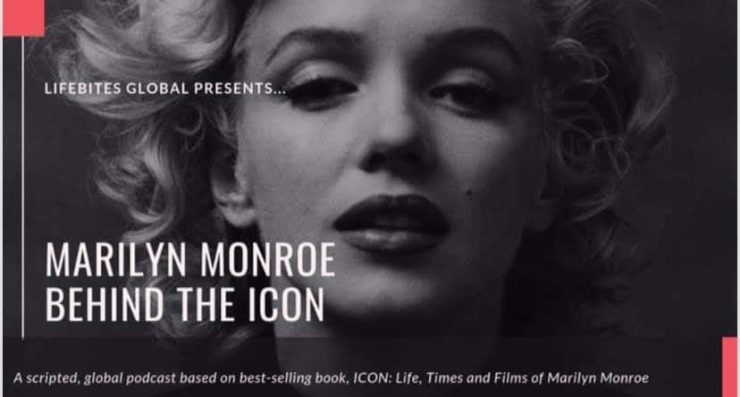
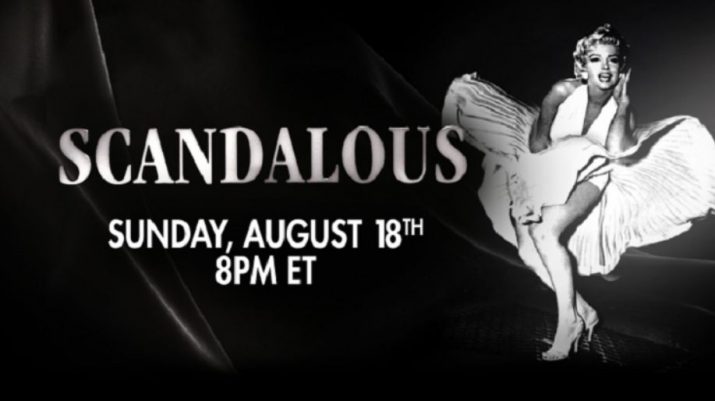
Marilyn’s life and death is the subject of a new 3-part documentary in the Fox News Channel series, Scandalous. It began last night, and will continue over the next two Sundays. It’s being aired in the US and Australia, but not as yet in Europe. Interviewees include authors Gary Vitacco Robles, Charles Casillo, Donald McGovern and Keith Badman, plus Elisa Jordan of LA Woman Tours and photographer Larry Schiller and Leigh Weiner’s son Devik. This alone could make it worth watching, although fans have already complained about the use of Marilyn’s autopsy photo on both the show and tabloid coverage.

Canadian crime writer Howard Engel, who has died aged 88, had a little-known connection to Marilyn, and a film noir classic. As Brian Kelly reports for the Sault Star, Engel played a bit part in Niagara – uncredited at the time, but now noted on IMDB – as ‘Man at Bus Stop’. It’s possible that he may be the man seated on a bench and holding a cigarette at the bus station, who briefly looks up as Marilyn hurries by, hoping to catch a bus to Chicago. However, this man looks older than his early twenties, as Engel would have been at the time.

A second possibility is that Engel was the man leaning on the pillar, who observes the commotion as the bus is cancelled. You can see his face more clearly at the left of this still photo, which shows the other players in this tense scene – including a disgruntled husband and wife, and two sailors involved in the police search for Rose Loomis (Marilyn.) Engel became a high school teacher and community theatre director, before launching his series of mystery novels featuring detective Benny Cooperman with The Suicide Murders (1980.)
